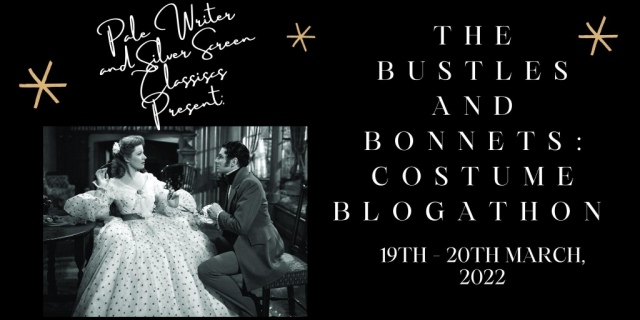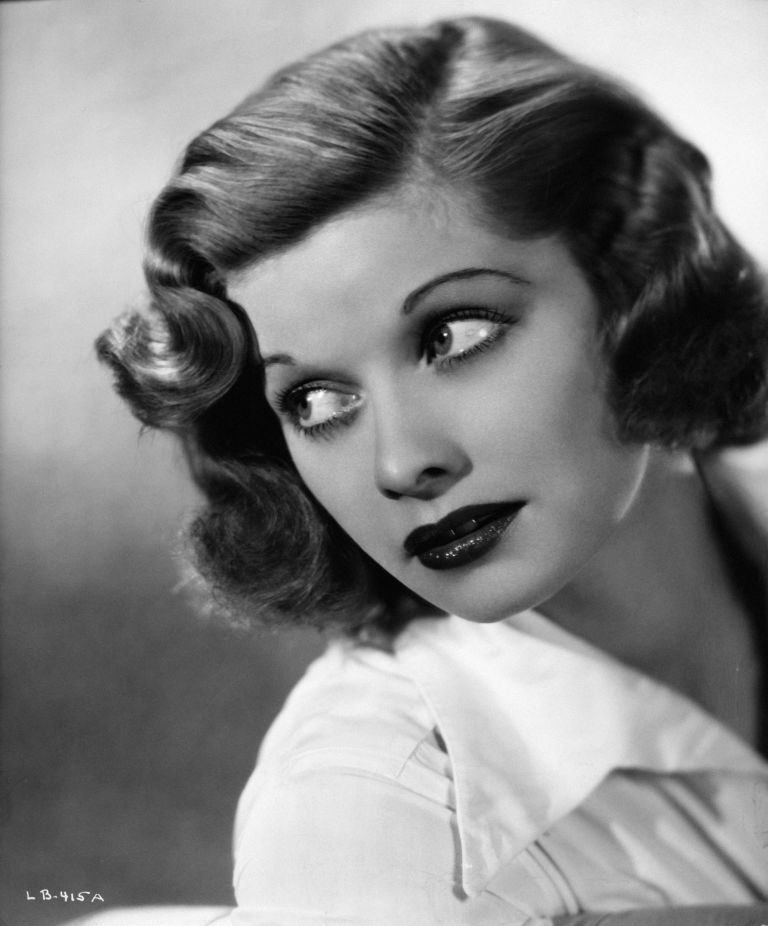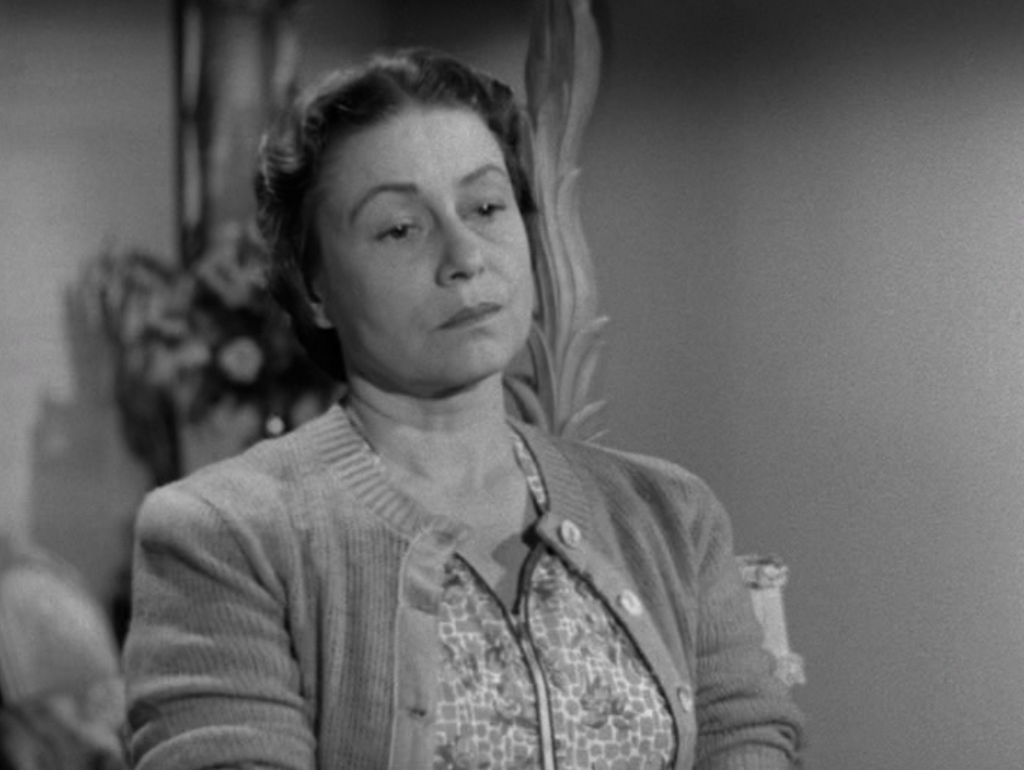As much as I love Bette Davis (she’s my second favorite after Lucille Ball), I do not watch The Private Lives of Elizabeth and Essex for her. I watch for my man, Errol Flynn (portrays Lord Essex, obviously). Davis’ preparation for the role as England’s Queen Elizabeth I is legendary. To accurately portray the 60-something year old monarch (despite only being 31), Davis shaved back her hairline to mimic Elizabeth I’s reported hair loss. She even shaved off her eyebrows! Which Davis later admitted was a mistake, as her eyebrows didn’t grow back properly. Forever after the film, she had to pencil in her eyebrows. Davis performed a lot of research for her role, and came up with many of Elizabeth I’s quirks and mannerisms herself based off her studies. One such quirk that Davis inserted into the film was Elizabeth’s propensity to fidget with her beads or other things. It’s the fidgeting that drives me crazy. It’s very distracting. It’s the one thing that turns me off of this film.

‘Elizabeth and Essex’ got off to a very rocky start. Davis wanted Sir Laurence Olivier to appear as Lord Essex. However, he was unavailable. Instead Warner Brothers cast their big star, Errol Flynn, to appear alongside Davis. The film’s high production costs led to the decision to cast Flynn as the studio hoped to not only recoup their budget, but to make a profit as well (obviously). Davis was very unhappy about the decision and did not make a secret of her dissatisfaction with her co-star. She treated Flynn very poorly and didn’t hold back when criticizing his acting ability. In his (fantastic) autobiography, My Wicked, Wicked Ways, Flynn recalls their first dress rehearsal of the scene in which Essex makes his entrance into the film to answer to Elizabeth I re: his latest military defeat (and she slaps him across the face). Essex has to make a long walk, through the middle of the English court, towards Elizabeth I who is seated on her throne.
“Finally, they called the first real rehearsal, and I must say, that as Bette assumed her place on the throne, dressed as Elizabeth, with great big square jewels on her hands, and on her wrists big heavy bracelets, she was living the part. She was Queen Elizabeth. I started the walk down through the English court. The cameras were grinding, the extras were gazing at me or at the throne, and I reached the Queen…Then all of a sudden, I felt as if I had been hit by a railroad locomotive. She had lifted one of her hands, heavy with those Elizabethan rings, and Joe Louis himself couldn’t give a right hook better than Bette hooked me with. My jaw went out. I felt a click behind my ear and I saw all these comets, shooting stars, all in one flash. It didn’t knock me to the ground. She had given me that little dainty hand, laden with about a pound of costume jewelry, right across the ear. I felt as if I were deaf.”
Errol Flynn in My Wicked Wicked Ways (1959).
The tense situation on the set did not improve from there. In his book, Flynn acknowledges that Bette was a great actress; but it’s safe to say that they were never going to be bosom buddies. Flynn also asserts that Bette’s animosity towards him is due to his turning down her advances. Whether this is true or not, is hard to say. Either way, Flynn and Bette never worked together again after ‘Elizabeth and Essex.’ There is a famous anecdote about Bette and friend (and ‘Elizabeth and Essex’ co-star) Olivia de Havilland. Decades after the filming of ‘Elizabeth and Essex’ and even Flynn’s passing in 1959, Bette and Olivia attended a viewing of ‘Elizabeth and Essex.’ Bette was quoted as saying about Flynn: “I was wrong, wrong wrong. Flynn was brilliant.”

The basic plot of ‘Elizabeth and Essex’ is that Queen Elizabeth I is having an affair with the much younger, Lord Essex. While she is in love with Essex, Elizabeth fears that his intentions are not entirely honorable. She is afraid that the much younger Essex, will use his youth, popularity, and influence to take over her throne. Her vanity worries continue throughout the film. Essex maintains that he is in love with Elizabeth, but at the same time he knows that there is no heir to her throne. It is hard to ascertain whether his motives are genuine, or if he just wants to insinuate himself into the accession line for the British throne. Elizabeth, I think, is in love with Essex, but struggles between her love for him and her duty to the English people. Meanwhile, Elizabeth’s lady-in-waiting, Penelope (de Havilland), also lusts for Essex and uses her position to try and drive a wedge between Elizabeth and Essex.
Now onto the real point of this blogathon–the costumes. Obviously, Elizabeth’s costumes are the highlight of the film. Famed costume designer, Orry-Kelly, designed all the costumes for ‘Elizabeth and Essex.’ Elizabeth’s gowns were very extravagant and apparently weighed about sixty pounds. Poor Bette Davis regularly lost 2-3 lbs daily just from sweating under the heavy lights during film production. Bette wears an array of Elizabethan gowns. I’ll admit that I am not familiar with the actual terminology for the different parts of an Elizabethan gown. For the purposes of this blog, I googled “Elizabethan gown” to try and learn the correct names for the different components.

Many of Bette’s gowns are what’s known as a “French gown” which is a dress with a square neckline, tight bodice, and a full skirt. Bette had to be put into a corset everyday in order to present the proper silhouette for her Elizabethan garb. According to some of the articles I read, buxom women would need to wear a corset in order for the gown to fit properly. Less-endowed women could get away with just some boning placed in the bodice of the gown. Bette no doubt had a bosom, thus the corset. Elizabethan gowns were outfitted with a device called a “Spanish Farthingale” which was essentially a hoop skirt, as to give the dress the correct Elizabethan look. Then, there was the “bumroll” (lol) which was a padded device that women wore around their hips to make the skirt pop out more. There is no doubt that Bette is also wearing a similar device to achieve the right aesthetic.
Then, there is another type of skirt, whether it is a petticoat, or something called a “kirtle” that will be a decorative skirt that will cover the spanish farthingale. Then, if that weren’t enough, FINALLY, the dress is put on. Bette’s costumes also include decorative elements, like the ruffs, which provide the more well known Elizabethan touches, like the big ruffled cuffs and high ruffled stiff collars. There were also ruffled collars that just went around the neck, but didn’t stick up half a foot from the neck. The kirtle is the contrasting part of the skirt that is visible. After this many different layers, which didn’t even include any sort of underwear or stockings that Bette might be wearing, no wonder the costume weighed 60 lbs.

Many of Bette’s gowns in the film follow this same silhouette, but the gowns themselves all different from one another. The gowns are made of varying fabrics (brocade, silk, velvet to name a few) and colors. Her gowns are festooned with a variety of different decorative elements, like beading, lace, jewelry, flowers, and embroidery. Orry-Kelly would also change up the gowns by adding bunched sleeves, or extra ruffles, or what have you. Elizabeth’s costumes are very beautiful and elaborate. They truly are the highlight of the film.
Flynn’s costumes however, while not as elaborate, are still beautiful. Very few men could get away with tights and still look cool. But as Flynn proved in both The Adventures of Robin Hood and again in ‘Private Lives,’ is that he looks amazing in everything. Honestly, I pay more attention to Flynn than I do to Bette when I watch this film. When Flynn makes his grand entrance into the film as the defeated Lord Essex, he is dressed in a beautiful navy blue with gold trim doublet, with brown and gold breeches, brown tights, and knee-high brown boots. Nobody wore knee-high boots as beautifully as the 6’2″ Flynn. He is also wearing a black and gold breastplate with a red sash draped diagonally across it. And of course, because this film takes place during the Elizabethan era, he has on a tall, ruffed collar. For the sake of propriety, we will assume that Flynn’s Lord Essex is not outfitted with the codpiece that was custom during Elizabethan times.

Flynn’s costumes follow a similar template, though the components are changed up based on the action of the scene. Obviously, he is not always dressed in battle armor, except when appropriate. There is another scene where Essex is dressed in a teal outfit, and he’s wearing a gold garter or some sort of decorative element around his leg, under the knee. He also wears a variety of short and long capes in this film. Flynn’s costumes are also adorned with a variety of embellishments, and the type of fabrics are changed up. While Elizabeth wears a lot of bright, bold colors, Essex for the most part is dressed in more neutrals, like dark blue, brown, and teal.
Olivia de Havilland’s Lady Penelope and Elizabeth’s other ladies in waiting, including chanteuse, Mistress Margaret Radcliffe (Nanette Fabray), wear costumes similar to Elizabeth I, but they are less ornate, less busy. Lady Penelope in particular wears quite low-cut costumes and overall appears sexier (as sexy as one can be in Elizabethan garb) than Elizabeth I. This was probably a purposeful choice as Lady Penelope is presented as a foe for Elizabeth I. She has the hots for Essex and seems like a more logical partner for him than the aging monarch.

This is a wonderful film, in spite of Bette Davis’ constant fidgeting with her beads or whatever else is in her hands. There is no doubt watching this film that she studied and worked very hard to play Elizabeth I. In fact, she might have prepared a little too much as this performance seems a little more rigid than other performances of Bette’s that I’ve seen. Flynn of course is Errol Flynn. He is a great hero and a great lover. It is logical that Elizabeth and Penelope would both be in love with him. It is also logical that he’d use his good looks, popularity and influence to worm his way into Elizabeth’s confidence, so that she’d let her guard down as he keeps his eye on the prize (i.e. her throne). It doesn’t even matter that Flynn didn’t even attempt to not sound Australian. Flynn looks hot in his costumes. That’s all that matters to me. Poor Olivia de Havilland, was cast in this film right after finishing filming her role as Melanie in Gone With the Wind. Someone of her stature is wasted in the small part as Lady Penelope. However, it is nice to see her play a bad girl, a conniving type.

I hear you, Elizabeth.



















































